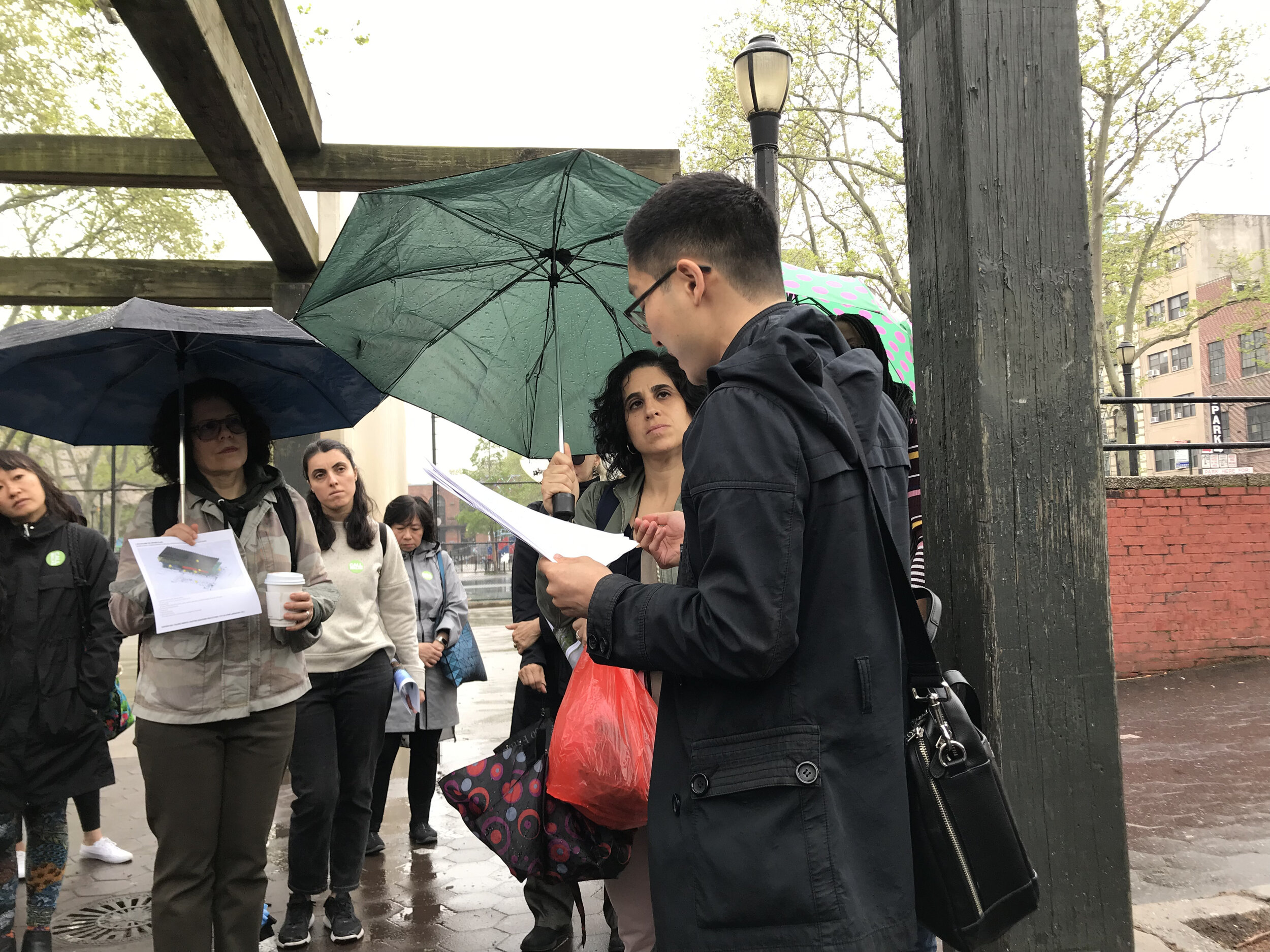Mapping Chinatown's Food System
Led by urbanist Stephen Fan & economic botanist Valerie Imbruce, Mapping Food Systems will take participants on a walk through Chinatown’s unique and robust food system, in which farms growing specialty fruits and vegetables are integrated with street level sidewalk vendors and shops by wholesale brokers. Stephen and Valerie share their reflection:
May 4th, 2019, Grand Street Subway Station, New York City
Beginning across from the Grand Street subway station, one of the major neighborhood entries for food shoppers from across the city, we traced the main commercial thoroughfares of the historic Cantonese section of Chinatown westward along Grand St, southward along Mott, and ended at the Canal Street triangle. These blocks have some of the highest concentrations of food stores, food street vendors, and food stoop-side stands. The walk focused on two aspects of interrogating the equitable and sustainable use of space, exploring the distribution networks and farms that supply Chinatown and the impacts on the urban realm. The walk was designed to paint a picture of a “food system” from production, to distribution and consumption, to show that Chinatown is not an isolated ethnic enclave, but is embedded in other geographies and subject to a myriad of social, economic and political processes.
Along the way, we stopped at key sites, including the location of the former Dragon Gate night market, a street corner where urban foragers sell their harvest, and the Canal Street triangle where produce vendors were removed and replaced by a tourist kiosk. Not only did we map the historic and current uses of urban space in relation to the food system, but we also used mapping as a projective act: by providing three design visions that imagined solutions to some of the infrastructure challenges of the area while retaining market space.
In addition to responding to issues raised at a CALL-organized community workshop, the walk furthered our interest in the potentials and limits of community-engaged design processes. It was our hope this walk would reach an audience that was interested in life in Chinatown from a personal standpoint, because they live and shop there, or advocate for the community. With a remarkable turnout of nearly 100 participants at two back-to-back walks, it did. We heard from participants about the variety of reasons why they care about Chinatown: as a teaching resource, as a cultural mecca for second+ generation Chinese, as a gateway for new immigrants, as a place to buy unique ingredients, as a place to be a cultural tourist, as a political site to advance Asian-American representation city wide, as an economic site of small, independent businesses, as part of their identity and personal family history as Chinese-American.
Mapping Food Systems was an inspirational kick-off to our upcoming research and project development in Chinatown, the partnerships that will develop, and we look forward to where it will take us and the shared vision that will grow from it.
This CALL/WALK is a part of our larger initiative in Manhattan’s Chinatown, where Valerie and Stephen are continuing to develop the ideas shared in this walk.




